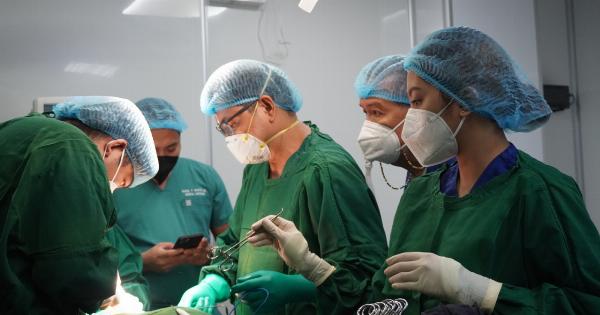Esophagectomy is a surgical procedure used to treat various conditions of the esophagus, including cancer, severe reflux disease, and advanced Barrett’s esophagus.
This complex surgery involves the removal of a portion or the entire esophagus and reconstruction of the gastrointestinal tract. Interpreting the esophagectomy surgery requires knowledge of the different methods used in the procedure. In this article, we will discuss ten methods commonly employed by surgeons for interpreting esophagectomy surgery.
1. Open Esophagectomy
Open esophagectomy is a traditional approach where a large incision is made in the chest or abdomen to access the esophagus. This method allows direct visualization and facilitates complex dissection and reconstruction.
However, it is associated with significant postoperative pain and longer recovery time.
2. Minimally Invasive Esophagectomy
Minimally invasive esophagectomy (MIE) is a less invasive alternative to open surgery. It involves making several small incisions and using specialized instruments and a camera to perform the surgery.
MIE results in reduced postoperative pain, shorter hospital stays, and faster recovery compared to open esophagectomy.
3. Robotic-Assisted Esophagectomy
Robotic-assisted esophagectomy is a variation of MIE where the surgeon controls robotic arms to perform the surgery. Robotic systems provide enhanced dexterity and precision, allowing for more intricate movements during the procedure.
This method offers improved visualization and maneuverability, leading to excellent surgical outcomes.
4. Transhiatal Esophagectomy
Transhiatal esophagectomy involves accessing the esophagus through an incision in the neck and abdomen. It does not require an incision in the chest.
The esophagus is dissected and removed, and the stomach is brought up into the chest to reconstruct the digestive tract. This method is often chosen when the tumor is located in the lower part of the esophagus.
5. Ivor Lewis Esophagectomy
Ivor Lewis esophagectomy is a two-stage procedure that combines abdominal and thoracic approaches. The first stage involves removing the esophagus and reconstructing the digestive tract in the abdomen.
In the second stage, the patient is repositioned, and the stomach is pulled up into the chest to connect it to the remaining portion of the esophagus. This method allows for thorough lymph node dissection and is commonly used for mid to lower esophageal cancers.
6. McKeown Esophagectomy
McKeown esophagectomy is a modified version of the Ivor Lewis procedure. It involves a three-stage approach: neck incision, abdomen incision, and right chest incision.
This approach provides even better exposure for lymph node dissection and enables the removal of upper esophageal tumors.
7. Total Laparoscopic Esophagectomy
Total laparoscopic esophagectomy is a minimally invasive approach where the entire esophagectomy is performed using laparoscopic techniques. This method results in reduced blood loss, shorter hospital stays, and faster recovery compared to open surgery.
It is particularly suitable for patients who are not candidates for traditional open surgery.
8. Endoscopic Submucosal Dissection
Endoscopic submucosal dissection (ESD) is a minimally invasive technique used for early-stage esophageal cancers or precancerous lesions. It involves the removal of tumors with minimal damage to the surrounding tissue using an endoscope.
ESD eliminates the need for surgery and allows for a quicker recovery with reduced complications.
9. Peroral Endoscopic Myotomy
Peroral endoscopic myotomy (POEM) is a novel technique used to treat achalasia, a condition characterized by the inability of the esophagus to relax and allow food to pass into the stomach.
POEM involves making a small incision in the lining of the esophagus and creating a tunnel to access the underlying muscles. The muscles are then divided to relieve the obstruction, allowing for improved swallowing.
10. Enhanced Recovery After Surgery (ERAS)
Enhanced recovery after surgery (ERAS) protocols are comprehensive care plans designed to optimize patient outcomes and expedite recovery.
These protocols involve a multimodal approach that includes preoperative counseling, minimally invasive surgery, optimized pain management, early mobilization, and early oral intake. ERAS programs have been shown to reduce complication rates, shorten hospital stays, and enhance patient satisfaction following esophagectomy surgery.




























